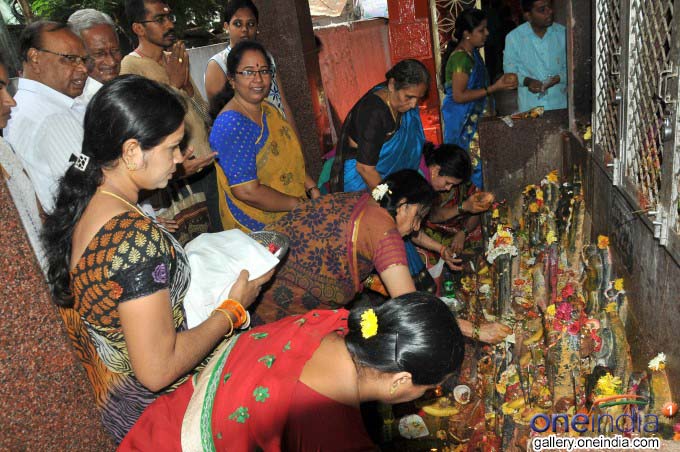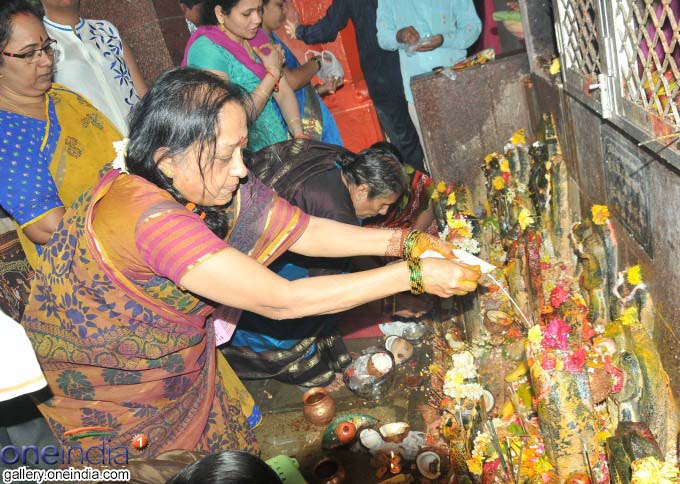Just In
- 3 hrs ago

- 6 hrs ago

- 8 hrs ago

- 10 hrs ago

Don't Miss
- Finance
 SpiceJet Faces Turbulence As 3 Lessors Move NCLT Alleging Default Worth Rs 77 Crore
SpiceJet Faces Turbulence As 3 Lessors Move NCLT Alleging Default Worth Rs 77 Crore - News
 'False': ECI Tells SC On Reports Of EVMs Showing One Extra Vote During Mock Poll In Kerala
'False': ECI Tells SC On Reports Of EVMs Showing One Extra Vote During Mock Poll In Kerala - Movies
 LSD 2 New Song: Turn Up The Volumes As 'Gandi Taal' Song from Love Sex Aur Dhokha 2 Is Out Now
LSD 2 New Song: Turn Up The Volumes As 'Gandi Taal' Song from Love Sex Aur Dhokha 2 Is Out Now - Technology
 Apple’s iPhone 17 Plus Could Sport a Smaller Display Compared to iPhone 15 Plus
Apple’s iPhone 17 Plus Could Sport a Smaller Display Compared to iPhone 15 Plus - Travel
Telangana's Waterfall: A Serene Escape Into Nature's Marvels
- Sports
 IPL Moments: On This Day - KKR's Brendon McCullum and his Iconic 158 at the Chinnaswamy Stadium
IPL Moments: On This Day - KKR's Brendon McCullum and his Iconic 158 at the Chinnaswamy Stadium - Education
 PSEB Class 10 Result 2024 Declared
PSEB Class 10 Result 2024 Declared - Automobiles
 The Rezvani Retro RR1 Is A Modified Porsche 911 Done Right
The Rezvani Retro RR1 Is A Modified Porsche 911 Done Right
Significance Of Celebrating Naga Panchami Festival
The Hindu mythology is marked by many aspects of worship dedicated to the sacred cow, garud and the snakes. Indian festivals are a glorious conglomeration or boutique of colour, sentiments and honest faith.
One such festival is the worship of the snakes on the fifth day of the moonlit fortnight of the Hindu month of shravan. This day is the Naga Panchami, and India sees a plethora of faith emerging in different forms of worship of the snake.

Many Hindu Gods are adorned with snakes. Lord Vishnu reclines on a bed of snake, while Lord Shiva adorns the snake around his neck. So comes the importance of the snakes in India.
In Maharashtra this festival is celebrated for fifteen days. In North Karnataka, this festival is associated with the jokali or swing.
The young girls gather together for an intimate exchange of fun and play. The newly married women return to their birth homes and prepare the sweet undi or laddu and bring the savories with them to their in-laws' place.
The
Belief
Of
Celebrating
Naga
Panchami
The
celebration
of
Naga
Panchami
is
akin
to
Lord
Krishna
and
the
Kaliya
Narthana.
It
is
believed
that
while
playing
on
the
banks
of
the
river
Yamuna,
Lord
Krishna,
still
a
child,
playfully
threw
his
ball
into
the
river.

While retrieving the ball, he fell into the river and was attacked by the venom spitting king of the serpents Kaliya. The entire episode of the fight is an exciting picture painted by many spiritualists as the victory of the good over the evil.
The famous Kalinga Narthana by Krishna dancing over the innumerable heads of Kalinga is personification of life weaving through its many cycles of joy and sorrow. Kaliya finally accepts that Krishna is invincible and pleads for himself and his large entourage of wives to be pardoned.
Lord Krishna spares him by a promise that Kaliya will not poison the Yamuna. Naga Panchami is celebrated as the victory of Krishna over Kaliya, the most dangerous snake.
Traditional
Way
Of
Celebrating
Naga
Panchami
Naga
Panchami
is
celebrated
by
worshipping
live
snakes
in
most
states
of
India.
The
snakes
are
offered
rice
and
milk
and
it
is
believed
that
snakes
on
this
day
do
no
harm
to
anybody.
Snake
charmers
carry
the
snakes
to
central
parts
of
temples
and
women
offer
their
worship
in
these
temples.
Why
Is
Naga
Panchami
Celebrated
Young
unmarried
girls
believe
that
praying
to
the
king
of
snakes
on
this
day
will
bring
them
blessings
of
the
lord
of
snakes
for
a
good
life
partner.
Married
women
worship
this
day
with
the
faith
and
belief
that
evil
will
be
warded
off
and
their
families
will
live
in
prosperity
and
good
health.

How Is Naga Panchami Celebrated?
The houses are painted anew and the threshold is smeared with turmeric and vermilion to welcome snakes. The gaiety is instantaneous as many families get together to celebrate and worship the snakes in the compound of their homes. Many houses in rural areas make snake images from dough and offer flowers and milk to this image. The image is then drowned in water by the end of the day.
Naga
Panchami
Celebrated
In
Cities
Urbanites
and
city
dwellers
too
are
not
very
far
off
in
their
fervor
of
celebrating
this
sacred
festival.
Women
and
children
wake
up
early
in
the
morning
and
offer
worship
to
the
images
of
snakes,
and
their
brothers
visit
the
homes
to
exchange
good
wishes
and
blessings.
It is marked as a day of bonding between brothers and sisters. The day witnesses a spread of delectable delicacies. On this festive and sacred day city dwellers visit temples dedicated to Lord Nagaraj.
Famous Temples Dedicated To Lord Nagaraj
- India is famous for its temples and famous amongst them dedicated to Lord Nagaraj are:
- Mannarashala Temple in Kerala
- Kukke Subramanya in Karnataka
- Bhujang Naga Temple in Gujurat
- Tirunageswaram Temple in Tirunageaswaram
- Nagaraja Temple in Nagarcoil, Tamil Nadu
- Ghatti Subramanya Temple in Karnataka
- Agasanahalli Nagappa near Davangere in Karnataka
- Seshnag Lake in Kashmir Valley
-
 pulseViral: Drunk Man Teasing And Playing With Snake Will Send Chills Down Your Spine
pulseViral: Drunk Man Teasing And Playing With Snake Will Send Chills Down Your Spine -
 womenBrides Receive Poisonous Snakes As Dowry In Kawardha, Chhattisgarh
womenBrides Receive Poisonous Snakes As Dowry In Kawardha, Chhattisgarh -
 wellnessWhat To Do If A Snake Bites You?
wellnessWhat To Do If A Snake Bites You? -
 festivalsNag Panchami 2021: Interesting Legends Associated with Nag Panchami
festivalsNag Panchami 2021: Interesting Legends Associated with Nag Panchami -
 festivalsNag Panchami 2019: The Auspicious Festival Of Snakes
festivalsNag Panchami 2019: The Auspicious Festival Of Snakes -
 wellnessFolk Remedies For Snake Bite
wellnessFolk Remedies For Snake Bite -
 faith mysticismWhy Does Lord Vishnu Sleep On A Serpent Bed?
faith mysticismWhy Does Lord Vishnu Sleep On A Serpent Bed? -
 faith mysticismSheshnag (5 Headed Snake): Myth Or Reality
faith mysticismSheshnag (5 Headed Snake): Myth Or Reality -
 pulse5 Interpretations Of A Snake Dream
pulse5 Interpretations Of A Snake Dream -
 lifeTop 5 World's Most Poisonous Snakes
lifeTop 5 World's Most Poisonous Snakes -
 trends n styleSlitter In Classic Snake Shoes!
trends n styleSlitter In Classic Snake Shoes! -
 pulseWHO Website To Prevent Snakebite Deaths
pulseWHO Website To Prevent Snakebite Deaths


 Click it and Unblock the Notifications
Click it and Unblock the Notifications



